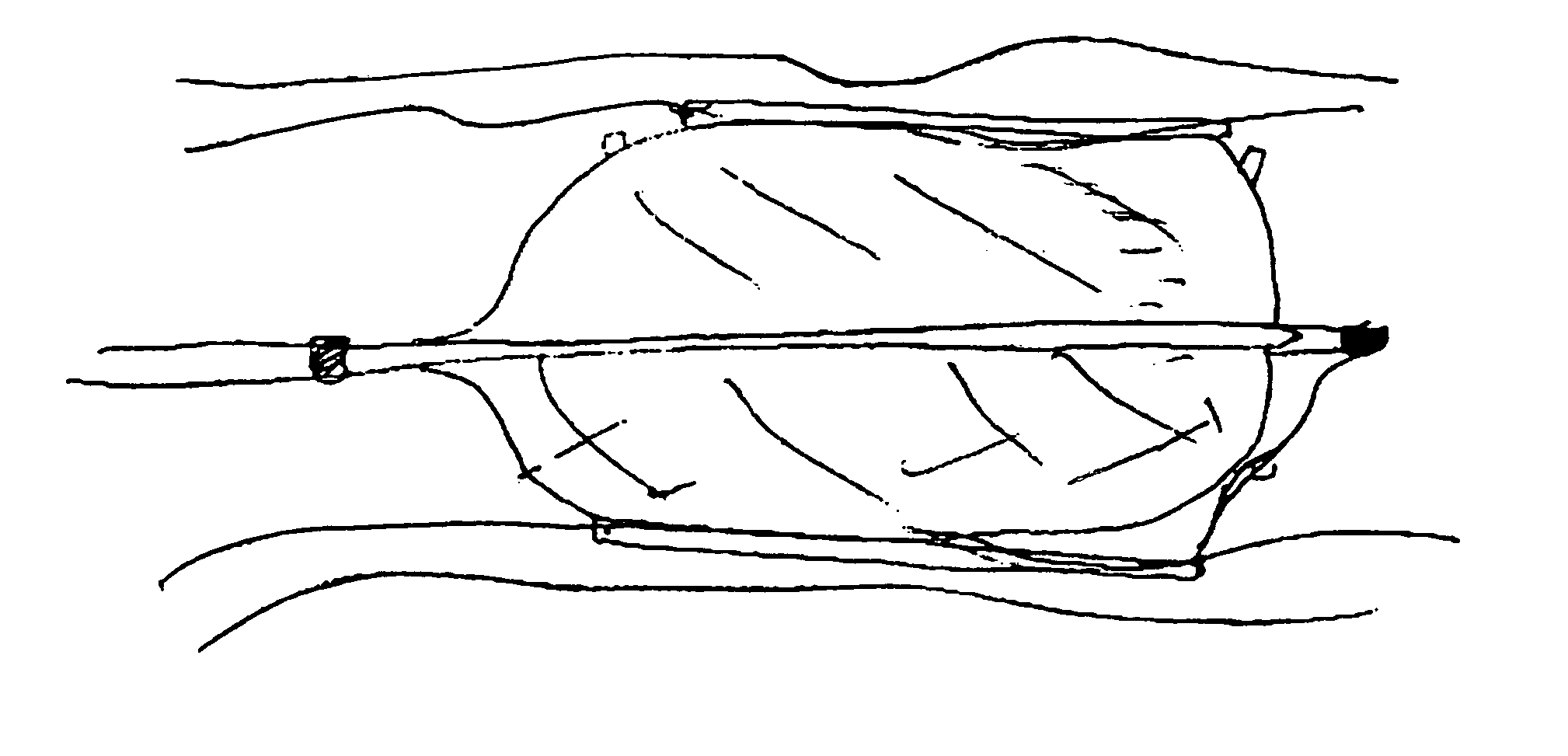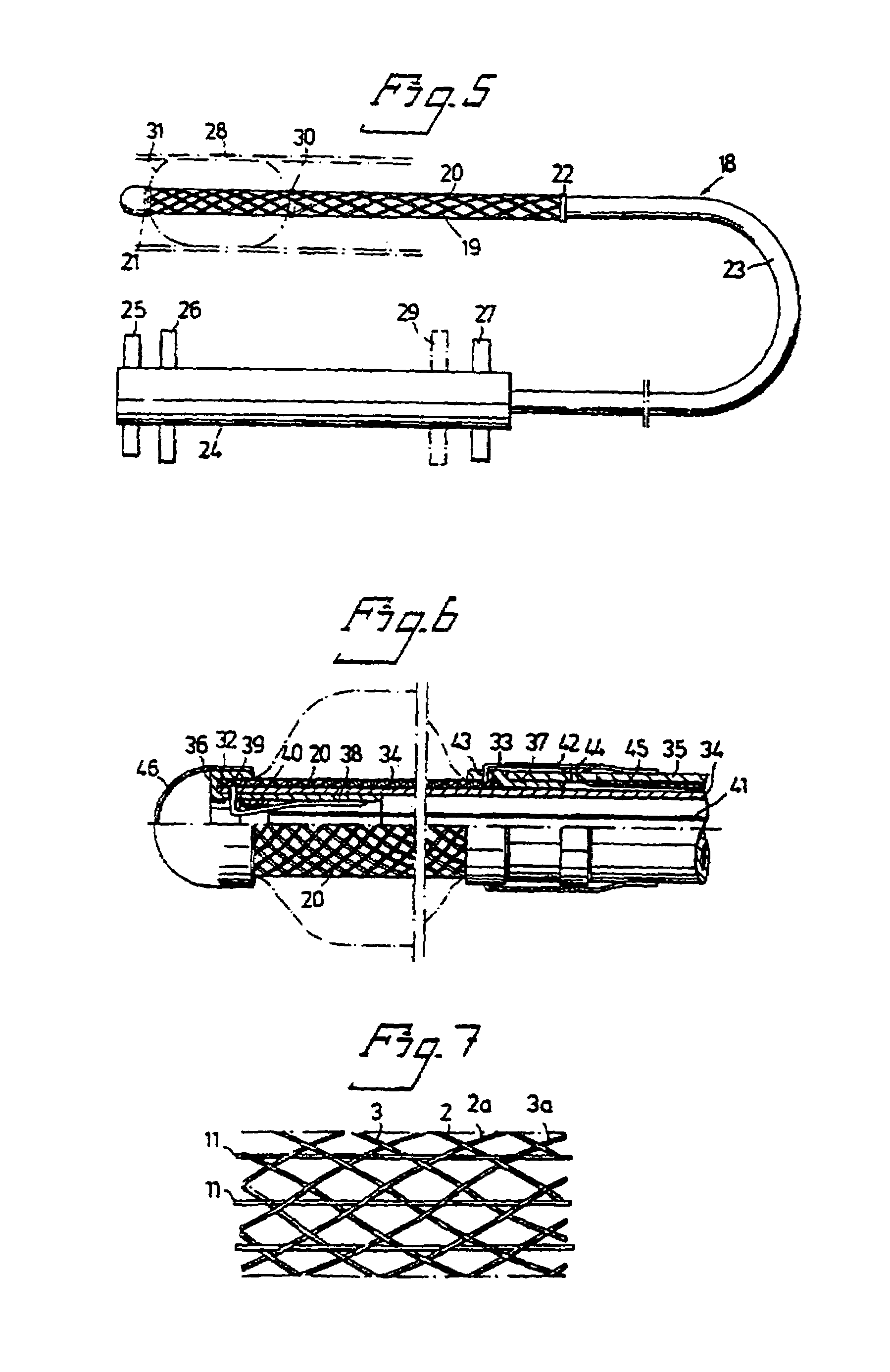Thermally pliable and carbon fiber stents
a carbon fiber and stent technology, applied in the field of stents, can solve the problem that the blood supply of the vessel cannot be increased, and achieve the effect of improving the blood supply of the vessel
- Summary
- Abstract
- Description
- Claims
- Application Information
AI Technical Summary
Benefits of technology
Problems solved by technology
Method used
Image
Examples
Embodiment Construction
[0051]The following disclosure references figures from U.S. Pat. No. 4,655,771, which patent is incorporated herein in its entirety by reference.
[0052]A flexible tubular body according to the present invention has been found to be suited for use as a prosthesis for transluminal implantation in blood vessels or other similar organs of the living body. The tubular body is inserted into place in the organism in a contracted state, i.e. with reduced diameter. After the tubular body has been inserted into position it is subjected to expansion and can stay in place in an expanded state by self-fixation if the diameter of the body in unloaded condition is selected somewhat larger than the diameter of the surrounding wall. This construction results in a certain permanent pressure of engagement against the inner wall so as to ensure good fixation.
[0053]To obtain the desired function the axially directed angle between crossing elements cam be greater than about 60 degrees, and can in some emb...
PUM
 Login to View More
Login to View More Abstract
Description
Claims
Application Information
 Login to View More
Login to View More - R&D
- Intellectual Property
- Life Sciences
- Materials
- Tech Scout
- Unparalleled Data Quality
- Higher Quality Content
- 60% Fewer Hallucinations
Browse by: Latest US Patents, China's latest patents, Technical Efficacy Thesaurus, Application Domain, Technology Topic, Popular Technical Reports.
© 2025 PatSnap. All rights reserved.Legal|Privacy policy|Modern Slavery Act Transparency Statement|Sitemap|About US| Contact US: help@patsnap.com



